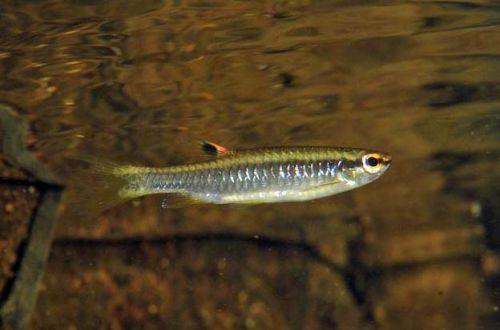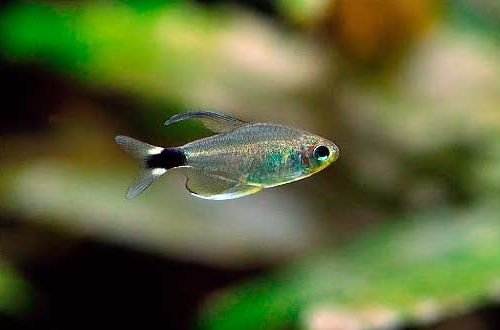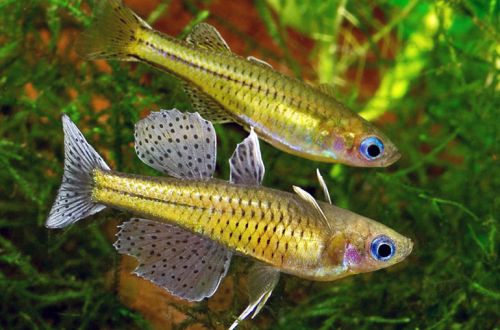
Pyrrulina sticky
Sticky pyrrulina or Beige-pink pyrrulina, scientific name Pyrrhulina filamentosa, belongs to the Lebiasinidae family (Lebiasinaceae). The fish is native to the equatorial part of South America. Inhabits numerous streams and rivers flowing among tropical rainforests.

Contents
Description
Adult individuals reach a length of about 10 cm. The fish has a swift elongated body with a large tail, in which the upper lobe is noticeably longer than the lower one. The main color is gray-silver with a dark back. Pinkish hues may appear. A barely noticeable black stripe runs along the body, starting at the head. Males, unlike females, have a reddish-black dorsal fin.
Behavior and Compatibility
Peaceful calm fish. They get along well with relatives and other non-aggressive species of comparable size. It is worth avoiding overly active neighbors in the aquarium.
Brief information:
- The volume of the aquarium – from 100 liters.
- Temperature – 24-28°C
- Value pH — 6.0–7.0
- Water hardness – 2–8 dH
- Substrate type – any
- Lighting – subdued
- Brackish water – no
- Water movement is weak
- The size of the fish is 8–10 cm.
- Nutrition – any food (floating) with a high protein content
- Temperament – peaceful
- Keeping in a group of 4-5 individuals
Maintenance and care, arrangement of the aquarium
Pyrrulina sticky prefers to be in the upper layer of water among numerous shelters in the form of thickets of plants. The optimal tank size is considered to be 100-150 liters for a group of 4-5 individuals, while the surface area is more important than the depth of the aquarium. The lighting is subdued. Floating plants will give additional shading.
Maintaining a stable water composition, which should have low pH and dH values, is key for long-term maintenance. In regions with hard water, it is recommended to install a filtration system with filter material that acidifies the water.
They tend to jump out of the aquarium, so a lid is a must.
Food
In nature, they feed on small insects, which they catch on the surface of the water. crustaceans and other invertebrates (zooplankton). In a home aquarium, it is necessary to feed floating food containing a large amount of protein.
Breeding / breeding
The prirrulins, like the related Copeins, have developed an amazing offspring defense mechanism. Fish lay their eggs not in the water, but on a leaf hanging low above the surface. The male and female make synchronized jumps, fixing the eggs on the leaf and fertilizing them at the same time. Then the female swims away, and the male remains nearby. With a sharp movement of the tail, it creates splashes of water with which it irrigates the masonry, preventing it from drying out. Such care lasts about 3 days, until the fry appear and, together with the drops, fall into the water.
In a home aquarium, it is quite possible to create similar conditions for reproduction. In the absence of low-hanging above-water foliage, the fish are able to lay (fix) eggs on the surface of wide floating leaves, or directly on the side wall of the aquarium near the water.





